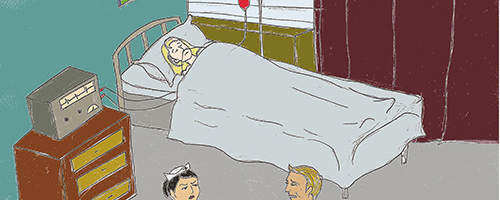Herpes. Syphilis. Gonorrhea. Do you have them? Do you know someone who does? You will probably be happy to know that most sexually transmitted infections can in fact be treated, and there are a number of resources at your disposal to learn about your infection and to help lessen the risk of going out and infecting someone else.
Want to ditch the itch? Visit SHAC
Herpes. Syphilis. Gonorrhea. Do you have them? Do you know someone who does?
You will probably be happy to know that most sexually transmitted infections can in fact be treated, and there are a number of resources at your disposal to learn about your infection and to help lessen the risk of going out and infecting someone else.
Sexually transmitted diseases have been called STDs for a long time. However, the term “STI,” or sexually transmitted infection, has recently taken its place.
What is the difference between an STD and an STI? STDs are known as infections with symptoms, according to Planned Parenthood’s website. The term STI is preferred to STD because these infections are often transmitted to others with no sign of symptoms, according to the website. “It’s a lot easier to prevent getting most STIs than it is to treat most STDs,” the site states.
“It’s just semantics,” said Carleen Cowan, a registered nurse for Planned Parenthood. “I use them interchangeably.”
Some of the most common or well-known STIs are chlamydia, syphilis, herpes and human papilloma virus. Out of this list, only herpes cannot be treated.
“I see a lot of chlamydia,” Cowan said. “We have even started the Chlamydia Project, where any woman under the age of 24 who comes in for their annual exam and is tested positive for chlamydia, then their medication is paid for.”
When asked which is the scariest STI, Gabriel Kelley, a senior at Portland State, answered with syphilis.”It’s a silent killer,” Kelley said.
There are several ways to prevent or greatly reduce your chances of getting an STI that do not involve abstinence. Using condoms for every vaginal or anal sexual experience is the most convenient and effective way to reduce the risk. Reducing sexual partners and knowing your partners’ sexual history also helps. Try to avoid body-fluid contact with people already diagnosed with STIs.
“Most people don’t even know they have them and are transmitting them to other people,” Cowan said.In most cases, if an STI goes untreated, it may have long-lasting effects. Sterility in both men and women, inflammation of the testes in men and cervical cancer as well as possible infection of newborns in women are all common outcomes of untreated STIs. Others STIs, such as syphilis, Hepatitis B and HIV, can cause heart disease, cancer and death.
For more information or help with treatment of STIs, the Center for Student Health and Counseling has services available. Planned Parenthood has numerous sites in Portland and can help with any STI concern you may have.
Visit www.shac.pdx.edu or www.plannedparenthood.org for more information or to set up an appointment.
BOX
The lowdown on your down low(Information obtained from Planned Parenthood)




